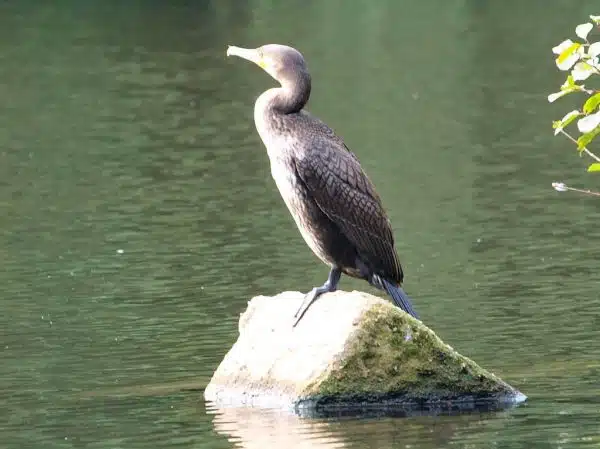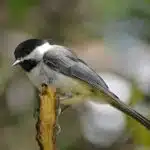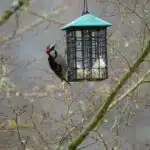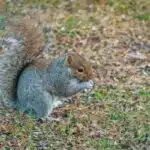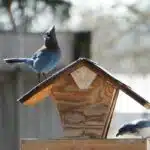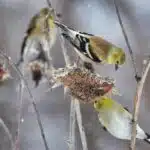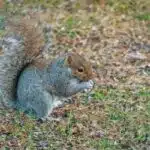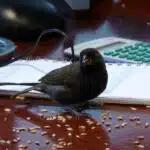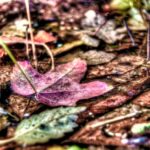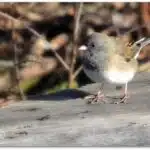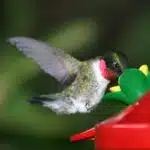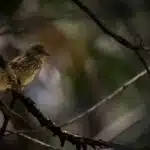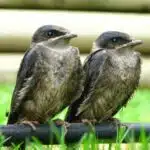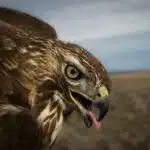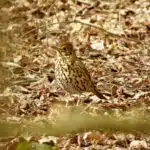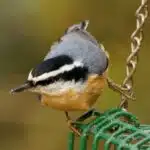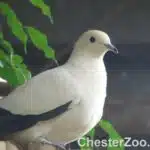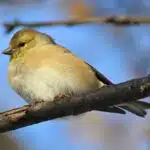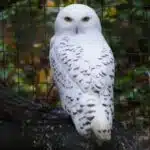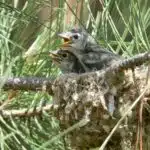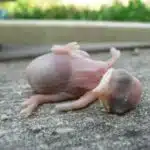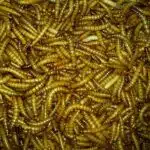As a bird watching expert, I have witnessed the joy and satisfaction that comes with attracting new birds to your backyard. The presence of different species of birds not only adds diversity to the natural environment but also provides a sense of fulfillment and purpose to those who enjoy serving others.
Attracting new birds to your backyard requires more than just putting up a bird feeder or filling it with seeds. It involves creating an inviting habitat that meets the specific needs of various bird species. In this article, I will share some effective tips and strategies on how to attract new birds to your backyard, based on my years of experience and research in the field. Whether you are a seasoned birder or just starting out, these tips will help you create a welcoming environment for new feathered friends while also enhancing the beauty of your outdoor space.
Understanding The Needs Of Different Bird Species
Identifying bird habitats is the first step in attracting new birds to your backyard. Different bird species have unique habitat requirements, including food sources, nesting materials, and shelter. For example, woodpeckers prefer trees with soft wood for drilling holes while hummingbirds need nectar-rich flowers to feed on. Identifying the typical habitats of the bird species you want to attract will help you create an environment that meets their needs.
Understanding bird migration is another important aspect of attracting new birds to your backyard. Many bird species migrate seasonally, so knowing when they pass through your area can help you plan for their arrival. In addition, some birds may only visit during certain times of year depending on their breeding and feeding habits. By understanding the timing and patterns of bird migration in your region, you can prepare your backyard to be a welcoming stopover or nesting site.
Overall, attracting new birds to your backyard requires careful consideration of their specific needs and preferences. By identifying bird habitats and understanding migration patterns, you can create an inviting environment that will attract a diverse range of bird species. The next step is creating a bird-friendly environment by providing food, water, shelter, and other resources that meet their needs.
Creating A Bird-Friendly Environment
As a bird enthusiast, creating a bird-friendly environment in your backyard can be an enjoyable and fulfilling DIY project. A well-designed habitat will not only attract new birds to your yard but also provide them with a safe haven for nesting, feeding, and resting. To create an ideal bird-friendly environment, it is essential to understand what birds need in terms of shelter, water, and food.
Firstly, provide natural shelter by incorporating native trees and bushes into your backyard landscape. These plants offer the perfect habitat for birds to build their nests and raise their young ones. Additionally, seasonal adjustments such as planting flowers that bloom at different times of the year help to attract various species of birds throughout the year. Secondly, set up an adequate water source such as a birdbath or small pond in your backyard. Having access to freshwater is vital for both drinking and bathing purposes.
Lastly, adding feeders with appropriate birdseed can be a great way to attract specific types of birds to your backyard. When selecting birdseed for your feeder consider different preferences that various species have when it comes to their diet. In addition, remember that some birds prefer different feeders such as platforms or hanging feeders. By incorporating these elements into your backyard habitat design you’ll create an ideal environment that will attract many different types of birds.
The next step towards creating an environment that attracts new birds is providing adequate food sources for them. This includes offering nectar feeders for hummingbirds or fruit-bearing bushes for thrushes or robins. Providing access to insects such as mealworms or crickets can also attract woodpeckers or chickadees who primarily eat insects. Overall by understanding the dietary needs of different bird species and utilizing appropriate feeding methods you will help promote a healthy ecosystem within your own backyard habitat.
Providing Adequate Food Sources
To attract new birds to your backyard, you need to provide adequate food sources. Food type and feeding schedule are crucial in attracting different bird species. Different birds have different preferences when it comes to food, so it is essential to know what types of birds you want to attract. If you want to attract seed-eating birds such as finches or sparrows, then a seed mix containing sunflowers seeds, millet, and cracked corn will be ideal. On the other hand, fruit-eating birds such as orioles and tanagers prefer fresh fruits like oranges and apples.
Feeder placement and design are also important considerations in attracting new birds. Feeders should be placed in an open area with easy access for the birds while keeping them safe from predators. It is best to hang feeders at least five feet above the ground and away from trees or bushes that could provide hiding spots for predators like cats. The feeder’s design should also cater to the type of bird you want to attract; tube feeders work well for small seed-eating birds like finches, while suet feeders are perfect for woodpeckers.
Feeding schedules should be consistent throughout the year, but different seasons might require different feeding times. During breeding seasons, providing extra protein-rich food like mealworms can help parent birds raise their young better. During winter months when natural food sources may not be available, offering more high-fat foods like peanuts can help sustain the birds’ energy levels through colder weather. By providing a variety of food types and maintaining an appropriate feeding schedule, you can attract a diverse range of bird species to your backyard.
As important as providing adequate food sources is offering fresh water for your feathered friends. Having clean water available will encourage more bird activity in your backyard by creating a place where they can drink and bathe comfortably. Providing water features such as birdbaths or fountains is ideal as they can attract a variety of bird species. A shallow birdbath that gradually slopes from the edge to the center is ideal as it allows birds to drink and bathe safely. Remember, keeping the water clean is essential, so it’s best to change the water regularly, especially during hot weather or when debris accumulates.
Offering Fresh Water
Having provided adequate food sources, it is equally essential to offer clean and fresh water to attract new birds to your backyard. Water is an essential element in a bird’s diet, and providing it will not only attract them but also keep them healthy. The benefits of hydration are numerous, including aiding digestion, regulating body temperature, and removing waste from the body.
To ensure that the birds are attracted to your backyard and remain healthy, it is crucial to maintain cleanliness in the water source. Dirty or stagnant water can be a breeding ground for bacteria and other harmful microorganisms that may harm the birds. Therefore, it is imperative to clean the bird baths regularly and refill with fresh water.
In summary, offering fresh water not only attracts new birds but also keeps them healthy. Maintaining cleanliness in the water source is equally vital as dirty water may lead to illnesses among birds. By providing clean and fresh water, you can create a welcoming environment for birds while ensuring their health and safety. In the subsequent section, we will discuss building nesting boxes or birdhouses as another way of attracting more feathered friends into your backyard.
Building Nesting Boxes Or Birdhouses
While some people may think that building nesting boxes or birdhouses is too complicated or time-consuming, the truth is that it can be a fun and rewarding DIY project. Not only does it provide a safe haven for birds to nest and raise their young, but it also adds an aesthetic element to your backyard. There are countless designs available online that cater to different bird species, so you’re sure to find one that suits your needs.
When building a nesting box or birdhouse, it’s crucial to use the best materials possible. This ensures that the structure is sturdy enough to withstand harsh weather conditions and keep the eggs and chicks safe from predators. Some of the best materials include untreated lumber, galvanized nails, and non-toxic paint or stain. Additionally, providing appropriate nesting materials such as grasses, feathers, and twigs will encourage birds to move in.
Overall, building a nesting box or birdhouse can be an enjoyable experience that benefits both you and your feathered friends. With various DIY designs available online and the right materials at hand, anyone can create a welcoming environment for birds in their backyard. In the next section, we will explore how planting native trees and shrubs can further attract new species of birds to your yard.
Planting Native Trees And Shrubs
As a bird watching expert, I highly recommend planting native trees and shrubs in your backyard to attract new birds. Native trees provide food sources for birds that have coevolved with the plant species, making it easier for them to forage and survive. Non-native trees can disrupt the natural balance of an ecosystem by outcompeting native plants and reducing biodiversity. By planting native trees, you can contribute to preserving the natural habitat of local bird populations.
Aside from providing food sources, shrubs offer other benefits to birds as well. They serve as nesting sites and shelter from harsh weather conditions, such as wind and rain. Additionally, dense shrubbery provides hiding places for birds to avoid predators. Planting a mix of deciduous and evergreen shrubs can ensure year-round protection for birds.
Incorporating native trees and shrubs into your backyard not only attracts new bird species but also helps sustain existing populations. The impact of non-native species on bird populations has been well-documented, with many studies showing a decline in bird diversity due to habitat loss and fragmentation caused by invasive plant species. By planting native trees and shrubs, you are taking a step towards creating a healthier ecosystem for both birds and other wildlife in your area.
By creating a safe space from predators with the use of natural barriers such as hedges or fencing made out of branches or brush piles will help protect birds from predators such as cats or hawks that may be lurking around your yard.
Creating A Safe Space From Predators
As bird watchers, it is important to take measures in creating a safe space for birds that visit your backyard. One of the most significant threats to birds is predation by other animals. Therefore, it is crucial to predator-proof your backyard to provide a secure space for your feathered friends.
Predator proofing techniques include installing baffles on poles and posts or using squirrel-proof feeders. These measures will prevent predators such as squirrels and raccoons from climbing up to the bird feeders and stealing food or harming the birds. Another useful technique is to keep your yard free of clutter and debris where predators can hide or nest.
Natural deterrents also play an essential role in keeping predators away from your backyard. Planting thorny bushes or prickly plants like holly around your yard’s perimeter can discourage predators from entering the area. Additionally, motion-activated sprinklers or lights can scare away unwanted visitors such as cats, raccoons, or even larger animals like bears.
Incorporating these predator-proofing techniques and natural deterrents into your backyard will create a safe haven for birds, allowing them to thrive without fear of becoming prey. In the next section, we will discuss how avoiding pesticides and chemicals can further benefit our feathered friends in their natural habitat.
Avoiding Pesticides And Chemicals
Creating a safe space for birds in your backyard is crucial to attracting new species. As the saying goes, “birds of a feather flock together,” and providing a safe and secure environment will encourage them to stay. To achieve this, it’s essential to eliminate any potential threats from predators such as cats, raccoons, or snakes.
However, keeping birds safe doesn’t mean using harmful pesticides or chemicals. Instead, there are natural alternatives and non-toxic solutions that can be used to protect your feathered friends. For example, planting native plants can provide food sources for birds while also deterring pests. Additionally, adding birdhouses or nesting boxes can give birds a place to call home without exposing them to danger.
To further attract new bird species to your backyard, it’s vital to use bird-friendly feeders and seed mixes. These devices and products cater specifically to different types of birds’ feeding habits and preferences. For instance, tube feeders are ideal for small songbirds who prefer seeds like sunflowers or nyjer, while platform feeders attract larger birds such as jays or doves who enjoy corn or millet.
By creating a safe space free from predators and using natural alternatives instead of harmful chemicals, you can successfully attract new bird species to your backyard. By incorporating bird-friendly feeders and seed mixes into your efforts, you’ll create an inviting environment for all kinds of feathered friends.
Using Bird-Friendly Feeders And Seed Mixes
Bird-friendly feeders and seed mixes can be an effective way to attract new birds to your backyard. Providing a variety of feeders and seed types can cater to different bird species’ preferences. When choosing seed mixes, consider the types of birds you want to attract as well as their natural diets. For example, finches prefer thistle or nyjer seeds while cardinals enjoy sunflower seeds.
DIY feeders can also be a fun and creative way to attract birds. Simple designs such as pinecone feeders filled with peanut butter and birdseed or milk jugs with cut-out openings for perches can offer a unique feeding experience for birds. Additionally, suet options are a great way to attract woodpeckers and other insect-eating birds. Suet is a high-energy food made from animal fat and mixed with seeds, fruits, or insects.
When it comes to attracting woodpeckers specifically, offering suet is a great option as mentioned earlier. However, providing them with access to dead trees or tree branches in your yard can also be beneficial since they use these surfaces for nesting and foraging. Remember that attracting new birds may take time and patience, but by offering different feeder options and seed varieties, you will increase the chances of success.
Transitioning into the next section about providing grit and calcium supplements: In addition to food sources like seed mixes and suet options, providing grit and calcium supplements can further enhance your backyard’s appeal to various bird species.
Providing Grit And Calcium Supplements
Birds need more than just birdseed to thrive. Providing grit and calcium supplements can be a great way to attract new birds to your backyard. As the saying goes, “A bird in the hand is worth two in the bush,” and by providing these important supplements, you can increase the chances of having birds visit your yard regularly.
One of the benefits of grit is that it helps birds digest their food properly. Grit is essentially small particles of sand or stone that birds consume to help grind up their food in their stomachs. Without enough grit, birds may not be able to properly break down their food and absorb all the necessary nutrients. Calcium is also important for many bird species as it helps with strong bone development, egg-laying, and overall health.
There are many calcium-rich food sources for birds, including crushed eggshells, oyster shells, and cuttlebone. These can be easily found at most pet stores or online retailers. You can also provide grit by scattering finely crushed gravel or granite chips on a flat surface in your backyard. Providing both grit and calcium supplements will not only help attract new birds but also ensure that they stay healthy while visiting your yard.
As a bird watching expert, I highly recommend providing grit and calcium supplements if you want to attract new birds to your backyard. By doing so, you’ll be providing an essential part of their diet that they may not find elsewhere. Remember to offer a variety of calcium-rich foods and make sure there’s always a fresh supply of grit available. In the next section, we’ll discuss how sound and movement can be used to further attract birds to your backyard.
Attracting Birds With Sound And Movement
Sound is an essential factor in attracting birds to your backyard. The use of soundscaping techniques can help you create an environment that suits the birds’ natural habitats. You can play bird songs, calls and noises using a range of devices such as speakers or mobile applications. These sounds will attract specific species and help create a familiar environment for them.
Another way to attract birds with movement is by using motion-activated devices such as sprinklers or birdbaths. These devices provide a source of water and encourage birds to visit your backyard regularly. Additionally, using wind chimes or other moving objects creates visual interest for the birds, which may lead them to stay longer in your yard.
By incorporating both sound and movement into your bird watching experience, you will not only attract new species but also keep the existing ones engaged. It is important to note that different birds are attracted to different sounds and movements. Therefore, it’s best to research the habits of each species before deciding on which techniques to use in your backyard.
Moving forward, monitoring bird activity and behavior is crucial in maintaining a healthy ecosystem for them to thrive in. By observing their feeding patterns, reproduction cycles and migration habits, you can tailor your soundscaping and motion techniques accordingly. This knowledge will enable you to create an ideal environment that attracts various types of birds throughout the year.
Monitoring Bird Activity And Behavior
As if attracting new birds to your backyard wasn’t challenging enough, keeping them around can be quite the task as well. It’s not just about putting out a bird feeder and hoping for the best – you need to monitor their activity and behavior. This will help you identify which species are frequenting your backyard, which in turn will allow you to make any necessary adjustments to keep them coming back.
Behavior tracking is crucial when it comes to studying birds. It involves observing their daily routines, such as feeding patterns and vocalizations. By monitoring their behavior, you can get a better idea of what kind of environment they prefer, and how you can tailor your backyard to meet those preferences. For example, if certain birds tend to visit during specific times of day, make sure that you have food available at those times.
Another important aspect of monitoring bird activity is species identification. You’ll want to familiarize yourself with the different types of birds that are native to your area so that you can recognize them when they show up in your backyard. Knowing what kind of birds are visiting will allow you to make informed decisions about what kind of feeders and birdhouses to put out, as well as what kind of plants or trees to include in your landscaping.
By tracking bird behavior and identifying different species in your backyard, you’re on your way to becoming an expert birder! But there’s still more work to be done if you want to connect with other bird enthusiasts and learn even more about these fascinating creatures. In the next section, we’ll explore some ways that you can reach out to other birders and experts in the field.
Connecting With Other Birders And Experts
As a bird watcher, connecting with other birders and experts can greatly enhance your experience and knowledge of birds. Finding mentors who are experienced in bird watching can offer valuable insights into identifying birds, their behaviors, and habitats. These mentors can also provide guidance on the best ways to attract new birds to your backyard.
Sharing experiences with other birders is another way to connect with the community and learn from others’ experiences. Joining local bird clubs or attending bird watching events can expose you to a wide range of perspectives and techniques for attracting birds. Additionally, social media platforms such as Facebook groups and online forums offer opportunities to connect with other birders around the world and share photos, tips, and stories.
By connecting with other birders and experts, you can also contribute to citizen science projects aimed at tracking bird populations. These projects rely on volunteers to collect data on birds in their neighborhoods or during specific time periods throughout the year. This information is then used by scientists to track changes in bird populations over time and identify areas where conservation efforts may be needed. Contributing to these projects not only helps further our understanding of birds but also allows you to make a meaningful contribution towards conservation efforts.
Contributing To Citizen Science Projects
Citizen science projects are a great way to contribute to avian research and conservation. Involvement in such projects often involves participating in observation activities, such as bird banding, nest monitoring, and surveys. Collected data can then be reported to the relevant research organizations or databases, allowing for a better understanding of bird populations. Additionally, citizen scientists can take proactive measures to attract new birds to their backyards, such as providing bird feeders, bird baths, and nesting boxes.
Participating In Observations
Collaborative observations are an essential aspect of citizen science projects aimed at identifying bird species in your backyard. Joining a community of bird watchers is one way to participate in these observations. Through collaboration, you can access a wealth of knowledge from experts and enthusiasts alike. You can also learn new skills and techniques for identifying different bird species, such as their calls, songs, and behaviors.
Citizen science projects provide an excellent opportunity for bird watchers to contribute to scientific research. By participating in collaborative observations, you can help researchers track changes in bird populations over time. These observations can also help identify areas where conservation efforts are needed to protect threatened or endangered bird species. Your contributions through citizen science projects play a crucial role in preserving the environment and promoting biodiversity.
Participating in collaborative observations is not only beneficial for scientific research but also provides a sense of fulfillment and connection with nature. By contributing to citizen science projects, you become part of a broader movement that aims to protect our natural world. As a bird watcher, observing birds in your backyard can be a relaxing and enjoyable activity that helps you appreciate the beauty of nature. Collaborative observations enable you to share this passion with others while making meaningful contributions to scientific research.
Reporting Data
Understanding bird behavior and analyzing bird migration patterns are critical components of contributing to citizen science projects. However, it is not enough to merely observe and identify the birds in your backyard. It is equally important to report your data accurately and promptly to ensure that it is useful for scientific research.
Reporting data involves documenting all of the relevant information about the birds you observe, including their species, location, behavior, and any other notable details. This information can then be used by researchers to track changes in bird populations over time, identify migration patterns, and monitor the health of different bird species.
Accurate reporting is essential for ensuring that the data collected through citizen science projects is reliable and useful for scientific research. By taking the time to document your observations carefully, you are helping to build a comprehensive database of information that can be used to protect and conserve our natural world. As a responsible citizen scientist, it is our duty not only to observe but also to report our data accurately and contribute meaningfully towards preserving biodiversity.
Enjoying The Beauty And Benefits Of Bird Watching
Citizen science projects are crucial in bird watching as they enable birders to contribute to scientific research. By sharing their observations with researchers, they help monitor the changes in bird populations and habitats over time. Citizen scientists can also participate in bird counts, banding programs, and habitat restoration projects to make a positive impact on birds’ conservation. Moreover, engaging in citizen science projects helps birders develop a deeper appreciation for birds and their ecological significance.
One of the most rewarding experiences of bird watching is enjoying the beauty of birds and their natural habitats. Bird watching can be done anywhere from your backyard to wildlife reserves or national parks. It provides an opportunity to observe different species of birds’ behaviors, migration patterns, and breeding habits. Furthermore, it offers numerous benefits such as reducing stress levels, improving mental health, and promoting physical activity.
If you are new to bird watching, there are some tips that can help you get started. First and foremost, invest in a good pair of binoculars and a field guide book that will help you identify different species of birds. Second, learn about the best time of day or season when specific species are most active or present in particular areas. Third, join local bird clubs or groups that offer guided walks or field trips to enhance your knowledge and skills while meeting like-minded individuals who share your passion for birds.
Bird watching is not only an enjoyable hobby but also an opportunity to contribute to scientific research while appreciating nature’s beauty. As a beginner birder participating in citizen science projects or joining local clubs can be both educational and fulfilling. With patience and persistence, you can hone your skills as a birder while gaining numerous benefits such as improved mental health and physical fitness.
Conclusion
Understanding the specific needs of different bird species is crucial to attracting them to your backyard. Creating a bird-friendly environment involves providing natural vegetation, shelter, and perching spots. Additionally, offering adequate food sources such as nectar, seeds, and insects is essential. Providing fresh water for drinking and bathing also attracts birds.
Building nesting boxes or birdhouses can provide safe places for birds to raise their young. Monitoring bird activity and behavior helps you determine which species are visiting your backyard. Connecting with other birders and experts can provide valuable insights on how to attract new birds.
One interesting statistic shows that over 45 million Americans participate in bird watching activities annually, generating billions of dollars in economic impact. This highlights the importance of creating a welcoming environment for birds in our backyards. Contributing to citizen science projects can help researchers better understand the behavior and migration patterns of different bird species.
As a bird watching expert, it is important to recognize the value of attracting new birds to our backyards not only for scientific research but also for personal enjoyment and appreciation of nature’s beauty. By implementing these strategies, you can create a thriving habitat that will attract a variety of different bird species throughout the year.
Image Credits
- “new bird” by johnb/Derbys/UK (featured)

